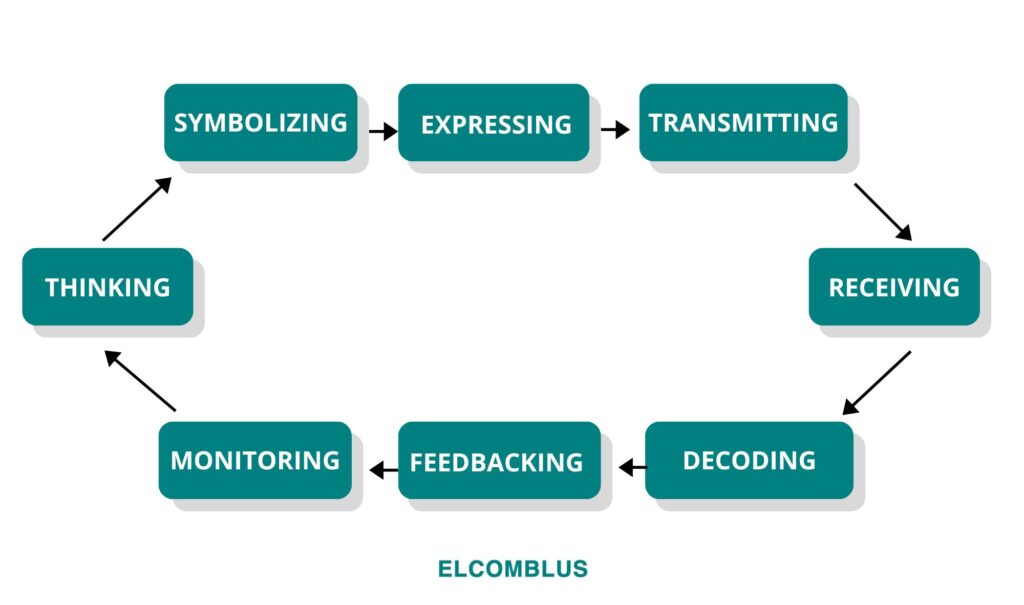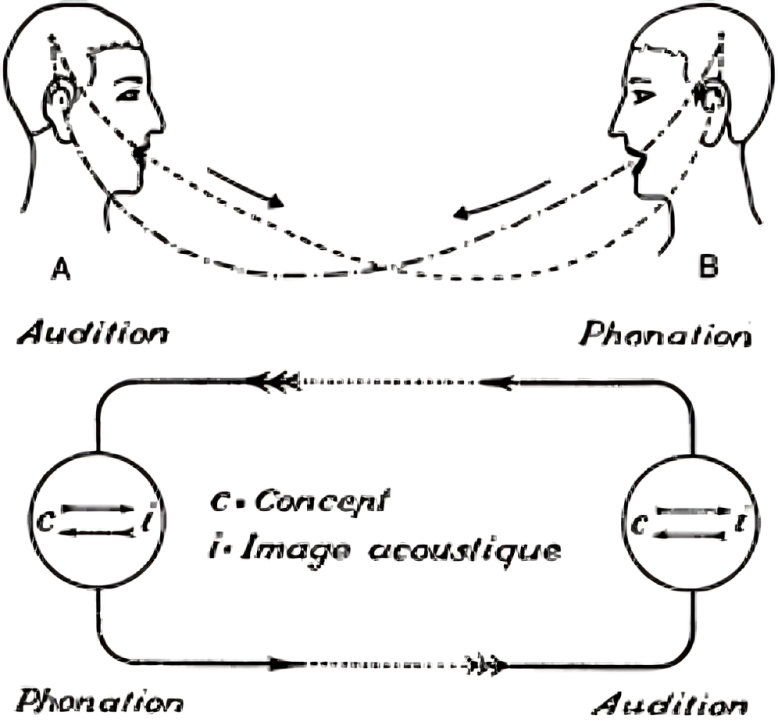There was a shift in the way communication was perceived when researchers began to recognize the receiver’s role in the communication process. Linear models fail to take into account the interaction that occurs between communicators. Instead of acting as passive listeners, receivers of messages may also convey information by responding or giving feedback, either through oral language or through actions, gestures, and facial expressions. Although the linear model represents some types of mass communication, it is too simplistic to account for the two-way process of communication.
Schramm’s Models
Wilbur Schramm (1955) developed a model in which each communicator takes on the roles of an encoder, interpreter, and decoder in the communication process. Since responding or giving feedback is also a form of transmitting information, the process is illustrated as interactive and cyclical rather than sequential.


Schramm also emphasized the importance of people’s fields of experience in interpreting meaning. According to him, there must be an overlap in both communicators’ fields of experience. This means that people involved in communication must share similar experiences or a common schematic background about the topic of conversation in order to connect with and understand each other. Cultural differences and the lack of shared experiences often result in misunderstanding. For instance, someone who has never experienced the loss of a loved one may find it difficult to relate to the experiences of a widow or widower. A child born to a wealthy family may have trouble understanding the plight of the working class. Parents who have never experienced working as teachers may be less empathetic toward those in the profession.
White’s Model

Eugene White’s model recognizes feedback as a part of the communication process. He described the process as sequential and cyclical, following the eight stages of oral communication: thinking, symbolizing, expressing, transmitting, receiving, decoding, feedbacking, and monitoring. Although White’s model recognizes the interaction between the sender and the receiver, it fails to consider the active role of the receiver in the process.
Saussure’s Speech Circuit Model of Communication

The diagram shows the sequential progression of communication, beginning in the brain of person A, where a signifier and signified are mutually articulated in a linguistic sign. The sign is spoken by A and heard by B. Person B then makes an association between sound-image and concept in their brain and composes a message in return by the same means.
According to Saussure, when a person thinks of a concept (c), it triggers their sound pattern (c, i), leading them to vocalize the concept (phonation or vocalization). The acoustic sound is then transmitted to another interlocutor who hears it (audition or hearing), which in turn triggers the sound pattern that prompts them to think of the concept.

